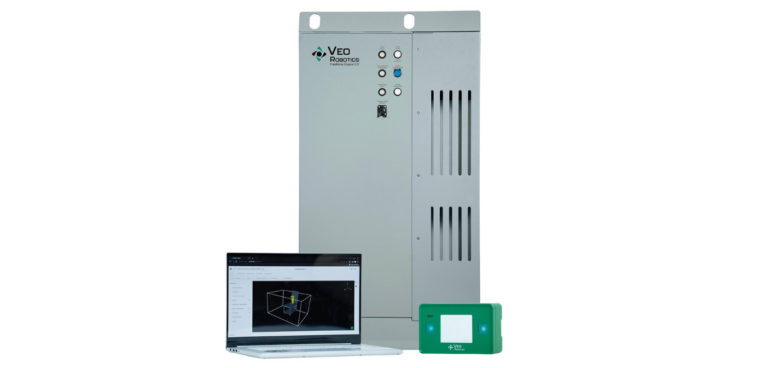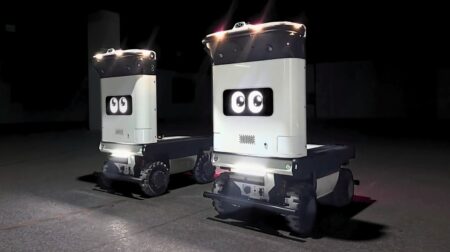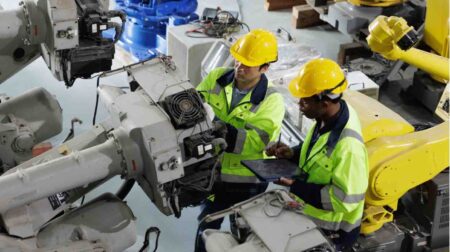Veo Robotics, an industrial automation company, has developed a 3D safeguarding system for industrial robots, named the FreeMove 2.0 Engine.
The redesigned FreeMove 2.0 Engine is an industrial computer, designed to work alongside FreeMove sensors to monitor workcells in 3D. Veo Robotics says the solution implements dynamic speed and separation monitoring to support safe human-robot interaction.
The automation company also suggests that its launch aligns with a growing use of automation and robots, which demands tighter safety procedures. Accordingly, FreeMove 2.0 reportedly comes with features to assist more complex manufacturing applications, including the ability to monitor limited access zones and adjacent workcells.
Moreover, the upgraded engine is designed to safeguard multiple workcells in a variety of configurations.
“Six years ago, we developed FreeMove as a first-of-its-kind safety solution to fill a gaping need in the industrial robotics industry,” said Patrick Toner, director of product marketing at Veo Robotics.
“Since then, we’ve worked with the world’s largest robot companies to bring manufacturers the ability to more seamlessly combine the strength, precision and speed of standard industrial robots with the ingenuity, judgment and dexterity of humans on their facility floors.
“FreeMove 2.0 builds on this progress, adding even more support for manufacturers to unlock the true power of human-robot collaboration.
“We’ve always believed our advanced safety system to be a game-changer for human-robot collaboration.
“We’re proud to continue helping our customers meet the unique demands of today’s flexible manufacturing environment and boost their productivity while keeping their workers safe.”
According to Veo Robotics, additional advancements to the new engine include better environmental robustness to work within harsh environments, reduced startup time and improved sensor registration.
The solution maintains FreeMove’s original software and what the company describes as ‘fail-safe hardware’, with the intention of providing manufacturers with dynamic speed and separation monitoring to automatically trigger a robot to stop when a human worker comes in close proximity with it.
This, the company claims, supports manufacturing teams to prioritise safety and productivity without sacrificing one for the other.








